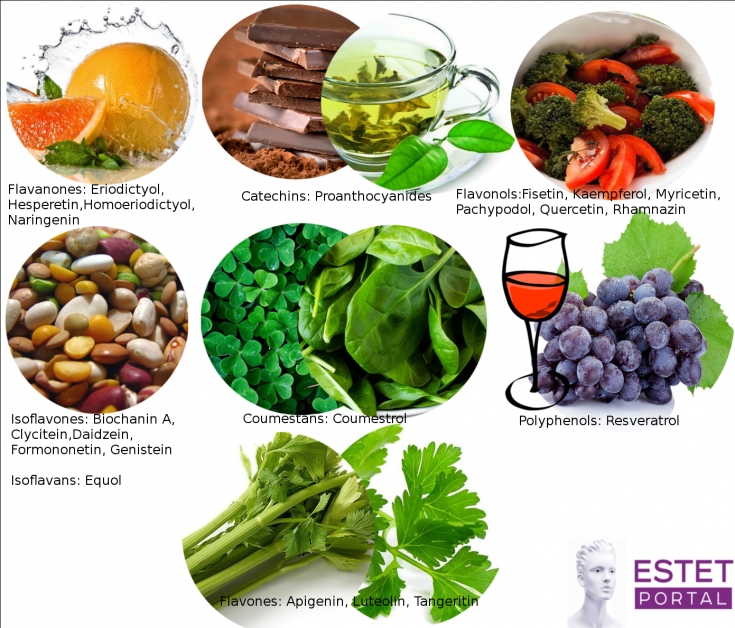Phytoestrogens — these are compounds of plant origin that have gained popularity thanks to & nbsp; its beneficial properties. Manufacturers of cosmetics claim that phytoestrogens — it is a panacea for all dermatological problems. And dietary supplement distributors say they help fight the main symptoms of menopause and prevent cancer.
But do all the effects attributed to phytoestrogens really exist? Which phytoestrogens should be avoided and which should be preferred? You will find answers to these and other questions on estet-portal.com in this article.
Types of phytoestrogens for women, their mechanism of action
All phytoestrogens can be divided into several main groups:
1. Polyphenols (Resveratrol) - found in grape skins and red wine.
2. Flavanoids:
• flavones (Apigenin, Luteolin, Tangeritin) — high concentration in parsley and celery;
• flavanones (Eriodictyol, Hesperetin, Homoeriodictyol, Naringenin) - predominantly present in citrus fruits;
• flavonols (Fisetin, Kaempferol, Myricetin,
Pachypodol, Quercetin, Rhamnazin) — found in tomatoes and broccoli;
• catechins(Proanthocyanides) — can be found in chocolate and green tea.
3. Isoflavanoids:
• Isoflavones (Biochanin A, Clycitein, Daidzein,
Formononetin, Genistein) and Isoflavans (Equol) — found in high concentrations in all legumes;
• Coumestanes(Coumestrol) — are present in clover and spinach.
All types of compounds have different biological effects, which can have both positive and negative effects on the human body.
Flavonoids may influence anti-inflammatory mechanisms by inhibiting reactive oxygen or nitrogen compounds.
Inside phytoestrogens it is recommended to use it as part of natural products, which is associated with a high concentration of active substances in biological supplements.
Phytoestrogens for women: phytoestrogens for women prevent the development of osteoporosis
in postmenopausal women;• phytoestrogens for women during menopause are dangerous for the development of cancer;• phytoestrogens for women are always good for the skin.

A common myth regarding phytoestrogens, and equol in particular, is their effect on bone mineralization in the
postmenopausal period. Indeed, some studies have shown that women who consume large amounts of soy products have higher bone density compared to women who consume less soy. However, a 2009 meta-analysis of randomized clinical trials found little association between increased consumption of soy isoflavones and improved bone mineral density, leading the authors to conclude that isoflavones are not able to significantly reduce the risk of osteoporosis.
Myth 2: Phytoestrogens for menopausal women are dangerous for the development of cancer
One of the major health benefits of phytoestrogens for women is the relief of vasomotor symptoms in perimenopause, including hot flashes and night sweats. But there is an opinion that phytoestrogens, when taken during menopause, provoke the development of
breast cancer. Modern research refutes these facts: phytoestrogens, unlike estradiol, which binds to alpha receptors, act on beta estrogen receptors. And in breast tumors, after activation of β-receptors, the proliferation of pathological cells is suppressed.
Myth 3: Phytoestrogens for women are always good for the skin
The isoflavanoid coumestrol, which is found in clover and spinach, in addition to its anticoagulant effect, useful for people with cardiovascular disease, has a significant photosensitizing effect. Too much can cause
pigmentation, sun allergies and minor burns. The catechin flavanoids found in green tea and cocoa butter have sunscreen properties, regulate capillary permeability and improve blood flow, and are therefore suitable for correcting rosacea.
Give preference to polyphenols found in grape skins and red wine, as they have proven antioxidant and anti-inflammatory activity.







Add a comment